Button-up and button-down shirts are two common types of shirts that you may have in your wardrobe, but do you know how to tell them apart?
In this guide, we will help you understand the difference between these two styles of shirts and how they came to be.
Button-up shirts are simply shirts with buttons on the front that allow you to fasten them, while button-down shirts have an additional feature: buttons on the tips of the collar that secure them to the shirt.
This small detail can greatly impact the appearance and versatility of your outfit, so keep reading to learn more.
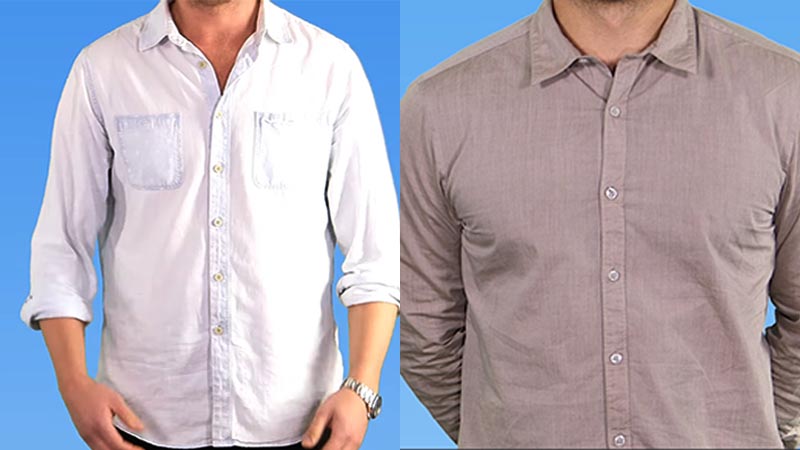
What Is a Button-up Shirt?
A button-up shirt is a classic garment characterized by a front closure secured by buttons running vertically down the front. It is a versatile piece of clothing that can be dressed up or down, making it suitable for various occasions.
Button-up shirts come in a wide range of styles, fabrics, and fits, offering options for both formal and casual settings. They typically feature a collar and cuffs, contributing to their polished appearance.
The term “button-up” is often used interchangeably with “button-down,” although the latter specifically refers to shirts with buttons securing the collar points.
Button-up shirts are a staple in men’s and women’s wardrobes, valued for their timeless appeal and adaptability.
What Is a Button-Down Shirt?
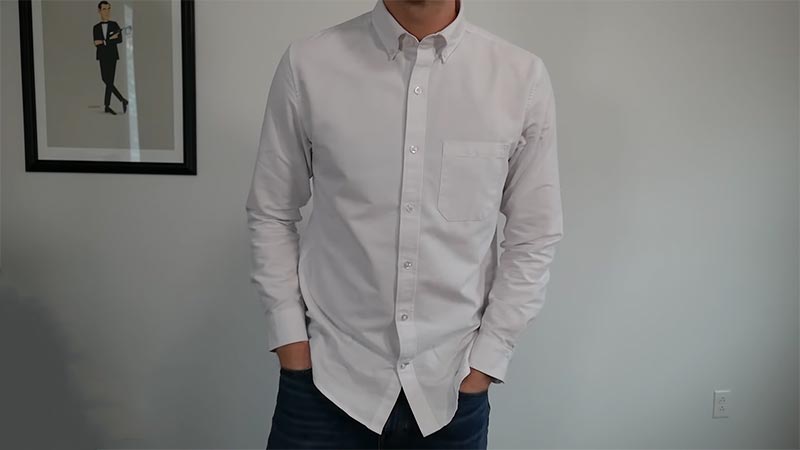
A button-down shirt is a classic garment characterized by its collared design and button fastenings along the front. The distinctive feature of a button-down shirt is the small buttons on the collar points, which fasten them to the shirt’s front, preventing them from flapping in the wind.
This style originated from 19th-century polo players who needed a practical solution to keep their collars in place during matches. Today, button-down shirts are a versatile wardrobe staple, suitable for both casual and business-casual settings.
They exude a laid-back sophistication, making them a popular choice for individuals seeking a comfortable yet polished look.
Difference Between Button Up and Button Down Shirt
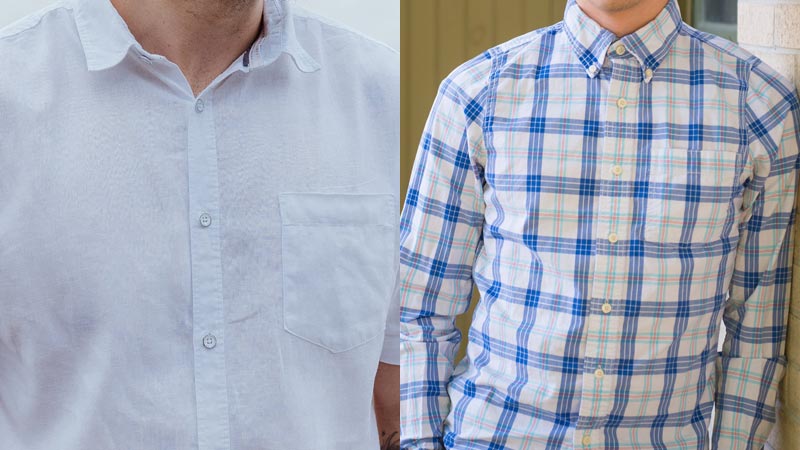
Button-up and button-down shirts are two popular styles of men’s dress shirts that are commonly worn in various formal and casual settings.
While they may seem similar at first glance, the two have distinct differences.
Collar Style
- Button-Up Shirt: A button-up shirt encompasses a wide range of styles. It can have a spread collar, which is more open and versatile, suitable for both formal and casual occasions.
There’s also the point collar with narrow collar points, lending a classic and formal look. Additionally, club collars have rounded edges, providing a unique and vintage aesthetic. - Button-Down Shirt: Button-down shirts, as the name implies, have buttons on the collar points. This design feature originated from the practical need to keep the collar in place during active pursuits like polo.
This style often features a softer, more relaxed collar, giving it a slightly more casual appearance than a standard button-up shirt.
Formality
- Button-Up Shirt: The formality of a button-up shirt depends on various factors. For instance, a crisp, well-tailored cotton button-up with a fine pattern or solid color can be worn in formal settings.
- Button-Down Shirt: Button-down shirts are inherently more casual. While they can be worn in semi-formal settings, they are better suited for business-casual or casual occasions.
It’s appropriate for business meetings or formal events when paired with a suit and tie. Their laid-back look makes them popular in workplaces with a less strict dress code.
Occasions
- Button-Up Shirt: Due to their versatility, button-up shirts can be dressed up or down for various occasions. They’re a go-to for dates, formal gatherings, or even job interviews when worn with ties and well-fitted trousers.
- Button-Down Shirt: Button-down shirts excel in settings that demand a more relaxed attire. They’re perfect for casual Fridays at the office, brunches, or social gatherings. They provide an effortlessly stylish option for occasions that don’t require a full suit and tie.
Styling Options
- Button-Up Shirt: Button-up shirts offer an extensive range of styling possibilities. They can be paired with various tie styles, allowing for a play with colors, patterns, and textures.
- Button-Down Shirt: Button-down shirts, being inherently more casual, work best when worn without a tie. They harmonize effortlessly with chinos, khakis, or even well-fitted jeans. They complement various jackets, including blazers, sports coats, and even leather jackets.
Additionally, they can be worn untucked for a more casual look or tucked in for a polished appearance. Layering options include crew-neck sweaters or V-neck pullovers, and they can also be worn open over a plain T-shirt for a relaxed yet put-together look.
Historical Significance
- Button-Up Shirt: The concept of a shirt that buttons up the front has been a staple in fashion for centuries, evolving with changing trends and materials.
- Button-Down Shirt: The button-down shirt, with its collar fasteners, has a more recent history. It originated in the late 19th century with polo players. This innovative adaptation allowed for a more practical, sporty, yet still fashionable option.
Choosing the Right Shirt Between Them for You
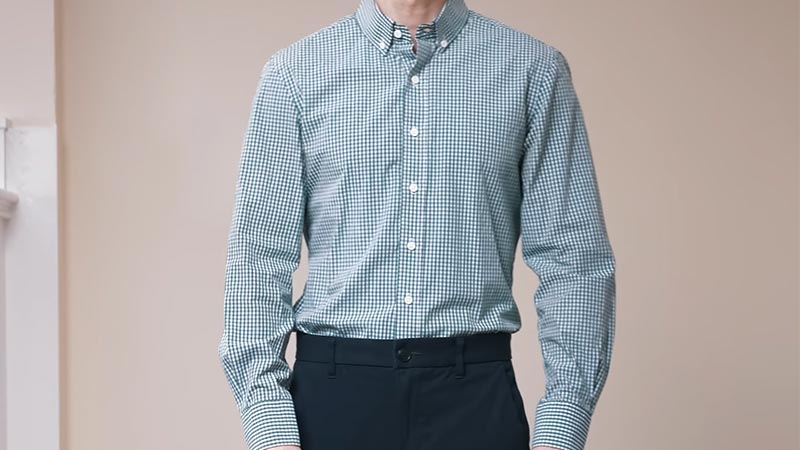
Choosing the right shirt for yourself depends on your personal style, body type, and the occasion you’re dressing for.
Here’s a breakdown to help you decide between different types of shirts:
Occasion
Consider the event or setting where you’ll be wearing the shirt.
Formal Events
Opt for a classic button-up dress shirt with a spread or point collar for formal events like weddings, galas, or business meetings. Choose solid colors or subtle patterns, and consider a French cuff if wearing cufflinks.
Business-Casual
A well-fitted button-down shirt can be paired with dress slacks or chinos in a business-casual setting. The shirt can be worn with or without a tie, and you can experiment with patterns or textures for added flair.
Casual Outings:
Consider a more laid-back option for relaxed settings like casual dinners, outings with friends, or weekends. Plaid or chambray shirts offer a comfortable, easygoing look. They pair effortlessly with jeans, khakis, or even casual shorts.
Fit
Choose a fit that complements your body type and personal style.
Slim Fit:
A slim-fit shirt provides a tailored, modern look that accentuates your physique. It’s an excellent choice for individuals with a slender build, offering a sleek silhouette. The narrow cut through the chest and waist adds a contemporary edge to your outfit.
Regular Fit:
A regular-fit shirt offers a more relaxed, comfortable fit that accommodates a wider range of body types. It provides freedom of movement without sacrificing style. This versatile fit balances a tailored look and ease of wear.
Classic Fit:
The classic fit is roomier and provides a timeless, traditional look. It offers ample space around the chest and waist, making it a comfortable option for those who prefer a more relaxed fit. This style exudes a sense of enduring elegance.
Fabric
Consider the fabric based on the weather and your comfort preferences.
Cotton is the most prevalent fabric for shirts due to its breathability and comfort. It’s suitable for various temperatures, making it a versatile choice year-round. Look for variations like poplin for a smooth finish or twill for a slightly heavier feel.
Linen shirts are ideal for warm climates, thanks to their lightweight and breathable nature. While linen does wrinkle easily, it adds a relaxed, summery charm to your attire. Embrace the natural creases as part of the fabric’s character.
Perfect for cooler weather, flannel shirts provide warmth and softness. They’re often brushed for a plush texture, making them an excellent choice for autumn and winter. The slightly heavier weight of flannel fabric adds a cozy element to your outfit.
Silk:
Silk shirts are reserved for formal occasions and exude an air of luxury. The smooth, glossy finish of silk fabric elevates your look, making it suitable for special events and sophisticated gatherings.
Style
Choose collar, cuff, and pattern styles that align with your personal taste:
Collar Styles
The collar of a shirt greatly influences its overall look. A spread collar offers a modern, open appearance, making it versatile for various occasions.
A point collar exudes a classic, formal vibe, especially when paired with a tie. A button-down collar gives a more casual, sporty look and works well in business-casual or casual settings.
Cuff Styles
Cuffs add a finishing touch to your shirt. Standard barrel cuffs are versatile and appropriate for most occasions.
French cuffs, characterized by their folded-back style, are more formal and require cufflinks. They’re reserved for upscale events and situations that demand a high level of elegance.
Patterns
Patterns bring visual interest to your shirt. Solid colors are timeless and versatile, making them suitable for various occasions.
Stripes add a dynamic element, whether pinstripes for a refined look or bold stripes for a statement. Checks and plaids offer a more relaxed, casual feel, making them perfect for leisurely outings.
Comfort and Confidence
Ultimately, choose a shirt that makes you feel comfortable and confident. Your personal style and how you feel in the shirt are important factors in making the right choice.
Experiment and Explore
Don’t be afraid to try different styles, colors, and fabrics. Experimenting with your wardrobe can lead to discovering new looks that suit you perfectly.
Personal Preference
Consider what makes you feel comfortable and confident. Consider your favorite colors, patterns, and styles that resonate with you. Your shirt should be an extension of your personality and a reflection of your individuality.
Versatility
Opt for shirts that can be dressed up or down. Neutral colors like white, light blue, and shades of grey are more versatile and can be paired with various bottoms and accessories.
Classic patterns like fine stripes or subtle checks also complement various ensembles.
Quality
Invest in well-constructed shirts made from high-quality materials. Look for details like reinforced seams, precise stitching, and durable buttons.
A well-made shirt lasts longer and provides a better fit and feel. It’s a worthwhile investment in your wardrobe.
Maintenance and Care Tips for Button-up and Button-Down Shirts
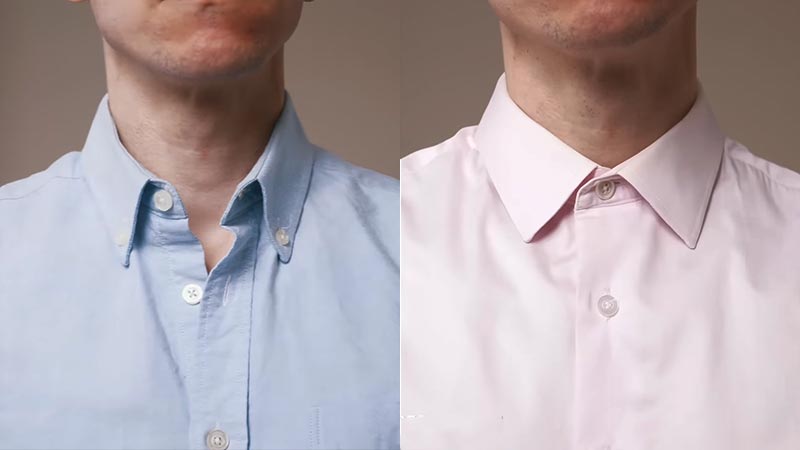
Taking proper care of your button-up and button-down shirts ensures they remain in great condition and last longer.
Here are some maintenance and care tips:
Read the Care Label
It’s important to read the care label attached to the shirt carefully. This label provides specific instructions tailored to the fabric and construction of the shirt.
It may include recommendations on washing temperature, drying method, and ironing instructions. Always follow these guidelines to avoid damaging the shirt.
Separate Colors
Sorting shirts by color is a crucial step in maintaining their vibrancy. This practice prevents dye transfer, especially in the case of dark or vibrant colors.
Separating your shirts ensures that your white shirts stay crisp and vibrant, while colored ones maintain their original hue.
Pre-Treat Stains
Swift action is crucial when dealing with stains. Using a stain remover or a small amount of mild detergent directly on the stain can significantly increase the chances of successful removal. Gently rubbing the fabric helps the cleaning agent penetrate and lift the stain.
Use a Gentle Cycle
While hand washing is the gentlest option, using a delicate or gentle cycle machine can be appropriate for certain fabrics. This is especially important for delicate fabrics that may be prone to damage with regular machine washing.
Use a Mild Detergent
Selecting a gentle, color-safe detergent is essential for maintaining the integrity of the fabric. Harsh chemicals like bleach can weaken the fibers over time, leading to premature wear and tear.
Cold Water
Washing shirts in cold water is a practice that helps conserve energy and protect the fabric from excessive heat. Hot water can cause certain fabrics to shrink or lose their shape.
Avoid Overloading
Overcrowding the washing machine can lead to inadequate cleaning and increased garment friction. Providing ample space for the shirts to move freely ensures a thorough and gentle wash.
Fasten Buttons
Buttoning up the shirt before washing is a simple yet effective step. This prevents buttons from entangling other clothing or getting caught in the washing machine’s drum. It also helps the shirt maintain its intended shape.
Skip the Dryer
Opting for air-drying over a dryer is highly recommended. High heat can cause shirts to shrink, damage fabric fibers, and reduce their overall lifespan. Instead, air-drying shirts by laying them flat or hanging them on a drying rack is a gentler alternative.
Iron with Care
When ironing is necessary, follow the care label instructions. Using a low to medium heat setting prevents scorching or damaging the fabric. Ironing can be delicate, and choosing the right setting is crucial.
Store Properly
Proper storage is essential for preserving the quality of your shirts. Hanging shirts in a well-ventilated area prevents mustiness and evaporates any residual moisture.
Avoiding direct sunlight is also important, as prolonged exposure can fade colors and weaken fabric fibers over time.
Button-Down Collars
For shirts with a button-down collar, unbuttoning it before washing or ironing is important. This precaution prevents stress on the buttons and preserves the collar’s intended shape.
Check Buttons
Regularly inspect buttons for any loose threads, signs of wear, or damage. Addressing these issues promptly by reinforcing or replacing buttons prevents them from falling off during wear or washing.
Avoid Overuse of Dry Cleaning
While dry cleaning can be effective for certain fabrics, avoiding overuse is important. Reserve it for special occasions or when the care label explicitly recommends it. Frequent dry cleaning can weaken fabric fibers over time.
Mend Small Repairs
Promptly addressing loose threads, minor rips, or missing buttons can prevent further damage and extend the shirt’s life. Basic sewing skills can be invaluable for small repairs.
FAQs
Are button-up and button-down shirts the same?
No, they are different types of shirts.
Which shirt is more comfortable to wear?
It depends on your personal preference and the fit of the shirt.
Which shirt is easier to iron?
Generally, button-up shirts are easier to iron because they have fewer buttons and a simpler collar.
Which shirt is more versatile?
Both shirts can be worn with different outfits and accessories, but button-down shirts are more adaptable to different seasons and weather conditions.
Which shirt is more expensive?
The price of the shirt depends on the brand, the quality, the fabric, and the design. There is no clear difference between button-up and button-down shirts regarding cost.
Wrap Up
Button-up and button-down shirts are both types of collared shirts that have buttons on the front. The main difference is that button-down shirts have extra buttons on the collar tips that fasten them to the shirt.
Button-down shirts have buttons on the tips of the collar that allow them to be secured to the shirt, while button-up shirts do not. This makes button-down shirts more casual and adaptable.
Both styles can be worn with different outfits and accessories, depending on the occasion and personal preference. The next time you shop for a shirt, you can choose the right one for your style and needs.
Leave a Reply